#visitquebec
Explore tagged Tumblr posts
Text
Quebec Summer Attractions /

Looking for a dose of adventure this summer? Quebec will wow you with its thrilling outdoor activities and picturesque landscapes.
0 notes
Text
Quebec Summer Attractions /

Planning a summer getaway? Explore the enchanting Quebec province and indulge in unforgettable experiences at its top-rated attractions.
0 notes
Text
Quebec
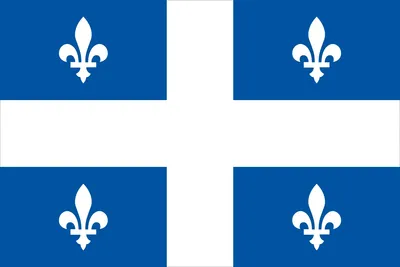
Quebec is a beautiful province located in the east-central part of Canada. With a rich history, diverse culture, and breathtaking natural scenery, it is a popular destination for tourists from around the world. In this article, we will provide a comprehensive overview of Quebec and cover various aspects of the province such as its etymology, history, geology, geography, ecology, biodiversity, climate, environmental issues, politics, economy, infrastructure, science and technology, famous people, demographics, ethnicities, religion, languages, health, culture, activities to do, cities, the most beautiful cities, places to visit, food and drink, flights, accommodation, and Quebec through the eyes of the world. Before we begin, let's take a look at some quick facts about Quebec. The province covers an area of 1,542,056 square kilometers, making it the largest province in Canada. Quebec City is the provincial capital and Montreal is the largest city. The official languages are French and English, with French being the predominantly spoken language. The population of Quebec is approximately 8.5 million, with a diverse mix of ethnicities and cultures. In the following sections, we will explore Quebec's many facets and highlight what makes it such a unique and fascinating place to visit.

Etymology
Quebec, one of the thirteen provinces of Canada, has a rich history and culture that can be traced back to its origins. The word Quebec is believed to originate from the Algonquin word 'Kebec,' meaning 'where the river narrows.' The Algonquin people were the indigenous inhabitants of the area before the arrival of European explorers. The name Quebec was first used to describe the city of Quebec on the St. Lawrence River, which was founded in 1608 by Samuel de Champlain. The city quickly became a significant trading hub due to its strategic location and proximity to the Great Lakes and the Atlantic Ocean. The name Quebec has since come to represent the entire province, which has a rich history of French and British colonization and immigration from all over the world. Today, Quebec is a vibrant and diverse province with a unique cultural identity that is reflected in its language, cuisine, and art. The name Quebec has also been the subject of debate and controversy, particularly in relation to Quebec's separatist movement. Some argue that the name Quebec should be exclusively associated with the French-speaking population of the province, while others argue that it should represent all residents regardless of their ethnicity or language. Despite these debates, the meaning and significance of the name Quebec remain an essential aspect of the province's identity and history. It represents the resilience and adaptability of the people who have called this region home for thousands of years.
History
Quebec's history can be traced back to its indigenous roots, with various First Nations communities inhabiting the region for thousands of years before European settlement. The arrival of French explorer Jacques Cartier in 1534 marked the beginning of European colonization, with the establishment of the settlement of Stadacona, now Quebec City. Over the next few centuries, Quebec became a vital center for fur trading and French colonization, with the construction of numerous fortifications and settlements. The British conquered Quebec in 1759, leading to the start of a period of British rule that lasted until Confederation in 1867. During this time, Quebec saw significant growth and development, with the construction of railroads, canals, and other infrastructure. The early 20th century was a period of significant social and political change in Quebec, marked by the Quiet Revolution. This movement helped to modernize and secularize Quebec society, leading to the laicization of schools, the creation of a welfare system, and other reforms. In the latter half of the 20th century, Quebec was marked by political and cultural upheaval, with the rise of the Quebec sovereignty movement. This movement sought to establish Quebec as a separate, independent nation, culminating in the 1980 and 1995 referendums on independence. Today, Quebec is one of Canada's most vibrant and culturally rich provinces, with a storied history that has helped to shape its unique identity and character.
Geology
Quebec's geology is characterized by a rocky terrain with various types of rocks. The province is divided into two main regions: the Canadian Shield and the Appalachian Mountains. The Canadian Shield is an ancient, rocky plateau that covers most of Quebec's northern and central regions. It is composed of igneous and metamorphic rocks, and its landscape features hills, lakes, and rivers. The Appalachian Mountains, on the other hand, are located in the southern part of Quebec and are primarily composed of sedimentary rocks. Quebec's geology also boasts an abundance of natural resources such as minerals, forests, and water bodies. The province is known for its vast mineral wealth, with deposits of gold, silver, copper, zinc, and iron. Quebec's forests cover over two-thirds of the province's land, making it a significant contributor to the country's forest industry. The province also has a vast network of lakes and rivers, making it one of the largest producers of hydroelectric power in the world. In addition to its mineral and natural wealth, Quebec's geology is also the foundation of its vast tourism industry. The province is home to numerous natural landmarks, including Mont Tremblant, Mont Sainte-Anne, and Gaspé Peninsula. These attractions offer visitors a chance to experience Quebec's unique rock formations, scenic drives, and picturesque landscapes. Quebec's geology plays a crucial role in its economic, environmental, and cultural landscape. With its natural resources, diverse terrain, and scenic beauty, Quebec is a treasure trove of geological wonders that contribute to the province's unique and enduring appeal.
Geography
Quebec is located in eastern Canada and covers an area of around 1.6 million square kilometers. The province is bordered by the Hudson Bay to the north, the Gulf of St. Lawrence and the Atlantic Ocean to the east, Ontario to the west, and the United States to the south. Quebec's landscape is characterized by vast forests, rolling hills, and majestic mountains. The province is home to the Laurentian Mountains, which run from the north of Quebec through to the United States. The highest peak in Quebec is Mont d'Iberville, which stands at 1,646 meters tall. Other notable mountains in Quebec include Mont Tremblant and Mont Saint-Anne. Quebec is also home to numerous water bodies, the largest of which is the St. Lawrence River. The St. Lawrence River is a vital transportation route and stretches for over 1,197 kilometers. Quebec is also home to over 4,500 rivers and 1,100 lakes, including Lake Mistassini, which is the largest natural freshwater lake in Quebec. In addition to its natural water bodies, Quebec is also home to man-made waterways, including the Lachine Canal in Montreal, which connects the Old Port of Montreal to Lake Saint-Louis. Quebec's water bodies are not just important for transportation, they also play a crucial role in the province's ecosystem, supporting a diverse range of flora and fauna. Quebec's physical features are an essential part of the province's identity and provide visitors with opportunities to explore and appreciate the beauty of nature.
Ecology
Quebec is home to a diverse and complex ecosystem, with a variety of biomes and habitats that support unique flora and fauna. From the boreal forests of the north to the deciduous forests and wetlands of the south, Quebec's ecosystem is crucial to the health and well-being of its inhabitants and the surrounding environment. The province's rich biodiversity includes over 400 species of birds, 130 species of fish, and numerous mammals, including moose, black bears, and lynx. Quebec's coastline also serves as an important habitat for whales, dolphins, and other marine life. However, Quebec's ecosystem faces numerous environmental pressures, including deforestation, pollution, and climate change. The province has implemented various conservation efforts to protect its natural resources and wildlife, including the creation of national parks and protected areas. Quebec is a leader in sustainable development, with a focus on reducing greenhouse gas emissions and transitioning to renewable energy sources. The province is also home to many environmental organizations, including the David Suzuki Foundation and Équiterre, which promote environmental sustainability and conservation. Through its biodiversity and commitment to environmental conservation, Quebec serves as an important example of how humans can coexist with nature and utilize its resources in a responsible and sustainable manner.
Biodiversity
Quebec is home to a vast array of flora and fauna due to its diverse geographic and climatic regions. Quebec's ecosystem is unique and diverse, with a wide range of species living in its forests, wetlands, and tundra. The boreal forest is one of Quebec's most distinctive biomes, covering much of the province's northern regions. This forest is home to a wide range of tree species, including spruce, pine, and fir. It also provides habitat for several wildlife species such as caribou, moose, black bears, wolves, and beavers. Quebec also boasts beautiful coastline along the Gulf of St. Lawrence and the St. Lawrence River, where visitors can observe a wide variety of marine species such as whales, seals, and dolphins. The province is also home to over 500 bird species, including the iconic snowy owl, osprey, and bald eagle. In addition to its terrestrial and marine life, Quebec has numerous freshwater ecosystems, including rivers and lakes that support a variety of fish species such as trout, salmon, and sturgeon. The province also has a rich insect population, including over 20,000 species of moths and butterflies. The province of Quebec has taken several measures to protect its biodiversity, including the establishment of various protected areas and national parks. Some of these protected areas include Parc national de la Gaspésie, Réserve faunique des Laurentides, and Forillon National Park. These parks provide habitat for many endangered species and serve as a vital breeding ground for migratory birds. Quebec's unique geographic and climatic diversity fosters a wide variety of flora and fauna. Its protected areas and conservation efforts continue to promote and protect the province's wealth of biodiversity for future generations to enjoy.
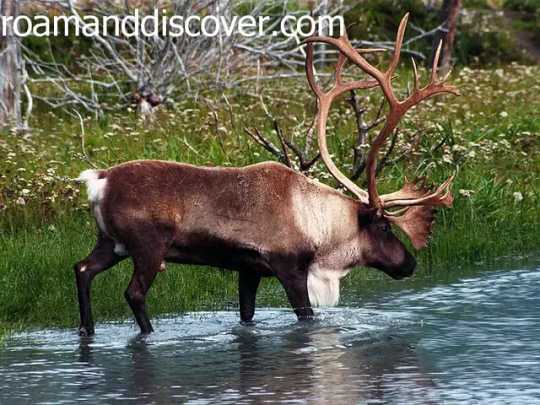
Caribou
Climate
Quebec has a humid continental climate, with four distinct seasons. The summers are warm and humid, with temperatures ranging from 20-30°C. The winters are cold and snowy, with temperatures averaging at -10°C. The spring and fall seasons are short but beautiful, with colorful foliage and blooming flowers. The climate in Quebec impacts the lives of its inhabitants in various ways. During the summer, residents take advantage of the warm weather and participate in outdoor activities such as hiking, swimming, and attending festivals. The winter season brings challenging weather conditions, with heavy snowfall and harsh winds. While this can be a burden for some, many Quebecers embrace winter sports such as skiing, snowboarding, and ice skating. The climate also affects many industries in Quebec, including farming and tourism. The fertile soil and abundant rain in the summer make for excellent crops, while the winter season attracts tourists from around the world to experience the beauty of Quebec's snow-covered landscapes. One environmental concern related to Quebec's climate is the effect of global warming. With temperatures rising and weather patterns becoming more unpredictable, there is a risk of increased flooding and other natural disasters. Efforts are being made to reduce the carbon footprint of Quebec and promote sustainable practices to mitigate these effects. Quebec's climate plays a significant role in the lives and economy of its residents, and the region's future relies on continued efforts towards environmental sustainability.
Environmental Issues
Environmental issues are of great concern in the province of Quebec. One of the major environmental issues in Quebec is climate change and its impact on the region's ecosystem. The province has witnessed an increase in temperatures and extreme weather events, which have led to long-term negative effects on the environment. Another environmental concern in Quebec is the issue of air pollution. The province has high levels of fine particulate matter in the air, which poses a serious threat to public health. This is largely due to the high concentration of industries in the province, particularly in Montreal. Quebec is also grappling with water pollution, especially in regards to its rivers. Industrial activity in the province has led to the release of toxic chemicals and pollutants into nearby rivers, posing a risk to the health of ecosystems and aquatic life. However, the province is not taking these issues lightly. The government of Quebec, in line with the Canadian government, has put in place measures to address these environmental concerns. Conservation efforts have been put in place to protect the province's natural resources. One such initiative is the creation of conservation areas and national parks. Quebec has over 30 national parks and conservation areas, protecting over 10% of its total land area. These areas are home to various species of flora and fauna and provide recreational opportunities for visitors. The province has also implemented measures to promote clean energy and reduce greenhouse gas emissions. The government has introduced incentives to encourage the use of renewable energy sources, such as wind and solar power. This is part of Quebec's commitment to reducing its carbon footprint and mitigating the impact of climate change. In addition, the province has programs in place to support sustainable agriculture and forestry practices. Quebec's forests cover over half of the province's land area, making them a vital natural resource for the region. The government has implemented sustainable practices to ensure the responsible use of this resource. Quebec faces several environmental challenges, but the province is taking action to address them. The government's conservation and sustainability efforts demonstrate the province's commitment to protecting its natural resources and mitigating the impact of climate change.
Politics
Quebec's political system and government structure have evolved over centuries. Quebec was initially a French colony before coming under British rule in the 1750s. Quebec remained part of the British Empire until 1867 when Canada became a self-governing country. In 1867, Quebec became one of Canada's founding provinces, and its control was given to a lieutenant governor who was appointed by the British Crown. The province of Quebec had a unicameral legislature known as the Legislative Assembly. However, it was not until the 1960s that Quebec politics began to change significantly. The Quiet Revolution in Quebec brought about major changes in the province. It was a period of intense social and political upheaval that led to the modernization of Quebec society. During the Quiet Revolution, the province gained greater control over its affairs and developed a distinct political culture and identity. Since the 1960s, Quebec's political system has undergone several significant changes. The province has had two referendums on sovereignty (in 1980 and 1995), and separatist movements have had an impact on the province's political landscape. Quebec's current political system consists of a parliamentary democracy with a legislature composed of 125 members. The province is governed by the National Assembly of Quebec, which is responsible for passing laws and overseeing government actions. The head of state is the Queen of Canada, who is represented in Quebec by the Lieutenant Governor. The premier of Quebec is the leader of the political party that has the most seats in the National Assembly. Currently, the premier of Quebec is Francois Legault, leader of the Coalition Avenir Quebec. Quebec has a robust political system that prioritizes the needs and interests of its citizens. The province has been a leader in social programs and initiatives, including universal healthcare and parental leave. Quebec's political system also values diversity and inclusivity, recognizing the importance of protecting the rights of all citizens. Quebec's political system has evolved to become a unique and distinctive part of Canada's political landscape. Its rich history, cultural heritage, and commitment to democracy make Quebec a thriving and dynamic province.
Economy
Quebec has the second largest economy in Canada, after Ontario, and is a major contributor to the country's overall GDP. The province's economy is diverse, with a range of industries and sectors driving its growth and development. The leading industries in Quebec include aerospace and aviation, information technology, biotechnology and life sciences, manufacturing, and tourism. These industries contribute significantly to the province's GDP and are major employers in the region. The aerospace and aviation industry is particularly strong in Quebec, with several major companies, including Bombardier and Pratt & Whitney Canada, headquartered in the province. Quebec is also home to a number of IT firms, including CGI Group and Coveo, which have helped the province establish a reputation as a hub for innovation and technology. In addition to these industries, Quebec has a well-established manufacturing sector, with major companies such as Alcoa, Resolute Forest Products, and Domtar operating in the province. The province is also known for its strong tourism industry, which attracts millions of visitors each year to experience Quebec's rich culture and stunning natural beauty. Other important sectors in Quebec's economy include mining, telecommunications, and agriculture. The province has significant natural resources, including iron ore, copper, and gold, and is a major producer of hydroelectric power. Key players in Quebec's economy include the government of Quebec, which plays a major role in the region's economic development through the provision of funding, grants, and incentives for businesses. Quebec's major financial institutions, including the Caisse de dépôt et placement du Québec and the Desjardins Group, also play an important role in the province's economy. Quebec's economy is dynamic and diverse, with a range of industries and sectors driving its growth and development. The province's strong focus on innovation, entrepreneurship, and sustainability has helped it establish itself as a major player in Canada's economy and a hub for innovation and technology. Read the full article
0 notes
Text
Vàl-David, Quebéc, Canada
Thinking about this place right now, wishing I could transport there, so I figured a new travel blog is happening. This is the only way for me to revisit Val-David at the moment.Around this time, but last year I visited Val-David & the area with friends and family. We rented out the most beautiful forest cabin there is. The chalets’ name was Le Sculptural – a part of several cabins from Exit…

View On WordPress
#autumnincanada#canada#canadaphotography#canadiangirl#canadianwriter#quebec#travelblog#travelcanada#valdavid#visitcanada#visitquebec
15 notes
·
View notes
Photo

Window reflection • • • • • #igersmontreal #livemontreal #visitquebec #imagesofcanada #oh_canada_ #explorecanada #explorequebec #montreal #streetphotography #montrealworld #ilovemontreal https://www.instagram.com/p/CUtSV6Hr-WF/?utm_medium=tumblr
#igersmontreal#livemontreal#visitquebec#imagesofcanada#oh_canada_#explorecanada#explorequebec#montreal#streetphotography#montrealworld#ilovemontreal
6 notes
·
View notes
Photo




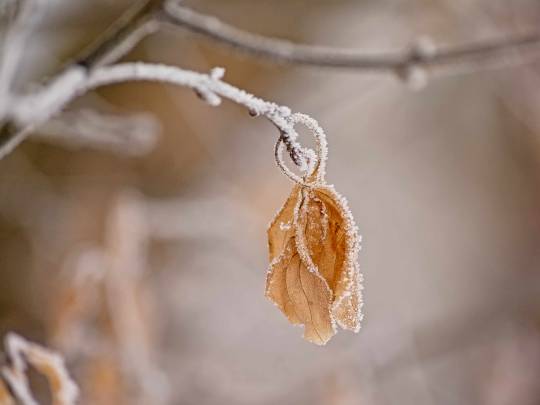





winter forest details. Ile de la visitaiton, Quebec, Canada
#winter#nature details#photography#winter wonderland#snow#close up#wanderlust#quebec#canada#forest#ile de la visitation#i have this thing with trees#hiking adventures#visitquebec#beautiful places#original photographers#original photography#photographers on tumblr#lensblr
301 notes
·
View notes
Photo
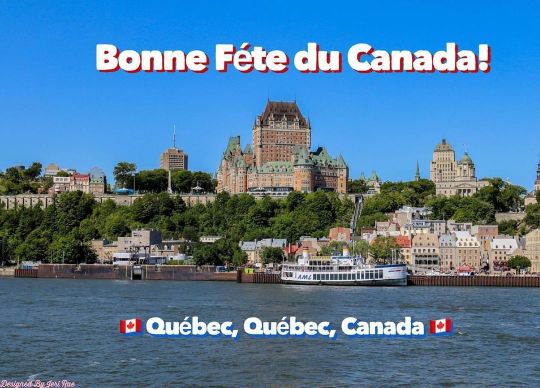
I love Québec and Québec City. In the mid nineties I spent a week exploring Montreal, Québec City and various other locations like the charming Île d'Orléans, an island in the Saint Lawrence River just a bit upstream from Québec City. There was also the Canyon Sainte-Anne, a spectacular, steep-sided gorge, carved by the Sainte-Anne-du-Nord River, 6 km east of Beaupré, Quebec, Canada If you haven’t been to Québec you should plan a trip in the future it’s a beautiful province! J'adore Québec et Québec. Au milieu des années 90, j'ai passé une semaine à explorer Montréal, Québec et divers autres endroits comme la charmante Île d'Orléans, une île du fleuve Saint-Laurent située un peu en amont de Québec. Il y avait aussi le Canyon Sainte-Anne, une gorge spectaculaire et escarpée, creusée par la rivière Sainte-Anne-du-Nord, à 6 km à l'est de Beaupré, Québec, Canada Si vous n’êtes pas allé au Québec, vous devriez planifier un voyage à l’avenir, c’est une belle province! #BonneFeteduCanada #HappyCanadaDay #Quebec #QuebecCanada #Québec #QuébecCity #VisitQuébec #VisitQuebec https://www.instagram.com/p/CQy9XtarecI/?utm_medium=tumblr
1 note
·
View note
Photo

🎈Fêter avec les fantômes🎉 . . . .. . ... . .. ... .. . . . .. #parcnational #sortirdehors #visitquebec #ski #montsvalin #destinationmontsvalin #parcnationaldesmontsvalin #sepaq #explore #nationalparks #cabin #cabininthewoods #snow #saguenay #explorecanada #visitcanada #tourismequebec #tourismcanada (at Parc national des Monts-Valin) https://www.instagram.com/p/BtoltPTAjfm/?utm_source=ig_tumblr_share&igshid=qdv8uk3u553h
#parcnational#sortirdehors#visitquebec#ski#montsvalin#destinationmontsvalin#parcnationaldesmontsvalin#sepaq#explore#nationalparks#cabin#cabininthewoods#snow#saguenay#explorecanada#visitcanada#tourismequebec#tourismcanada
1 note
·
View note
Photo

Sun and Hikes. Hikes, waterfalls and nature always attracts me. Whether it's in Guadeloupe, Canada, India, Mexico or in Bali. No matter where my adventure takes me, I ends up hiking to a waterfall. #traveltodiscover #discoverquebec #quebectourism #visitquebec (at Canyon Sainte-Anne) https://www.instagram.com/p/CgUKjOdO_Kzetd6JK22nuPspxmQpgIY033d_r80/?igshid=NGJjMDIxMWI=
1 note
·
View note
Photo
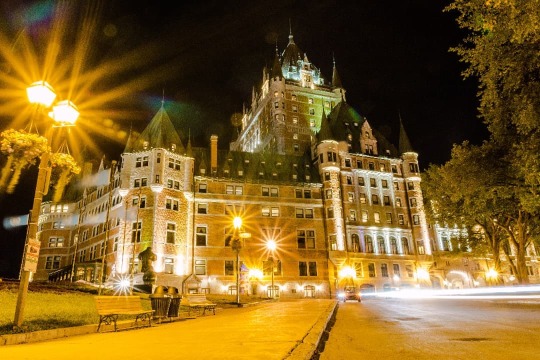
#quebeccity #quebec #quebectourism #quebeccanada #quebecphotos #visitquebec #chateaufrontenac #architecturephotography #chateau #heritage #Канада #архитектура #фотография #путешествие #фотодень #фотодня #picoftheday #photooftheday (at Quebec City, Quebec) https://www.instagram.com/p/CWHvvyhtRYB/?utm_medium=tumblr
#quebeccity#quebec#quebectourism#quebeccanada#quebecphotos#visitquebec#chateaufrontenac#architecturephotography#chateau#heritage#канада#архитектура#фотография#путешествие#фотодень#фотодня#picoftheday#photooftheday
0 notes
Photo

welcome (Québec, Canada)
#photo#photography#french#frenchie#trip#canada#québec#quebec city#ville de québec#street#door#walk#visitquebec#visitcanada
2 notes
·
View notes
Photo

📍🇨🇦 Iconic Fairmont Château Frontenac from Québec #chateaufrontenac #frontenac #famousplace #quebec #history #quebeccity #québec #villedequebec #vieuxquebec #historicalcity #instalike #lovequebec #visitquebec #travel #travel #building #picoftheday #luxury #hotel #architecture #canada #instaplace #picoftheday #city #instalike #bestplace #dogbagngo #fairmont (à Château Frontenac, Québec)
#building#instaplace#hotel#quebec#visitquebec#villedequebec#canada#québec#instalike#historicalcity#lovequebec#history#fairmont#bestplace#luxury#quebeccity#travel#city#chateaufrontenac#dogbagngo#frontenac#vieuxquebec#picoftheday#architecture#famousplace
1 note
·
View note
Photo

Scenery always changes when you’re close to the top • • • • #sebblog #hiking #hikingadventures #hiker #explorecanada #explorequebec #visitquebec #visitcanada #hike #hikequebec #oh_canada #getoutside #leavenotrace #hikecanada #snowshoeing #outdoors #backpacking #trekking #tourismelanaudiere (at Mont Kaaikop) https://www.instagram.com/p/CZjkZR0LlTY/?utm_medium=tumblr
#sebblog#hiking#hikingadventures#hiker#explorecanada#explorequebec#visitquebec#visitcanada#hike#hikequebec#oh_canada#getoutside#leavenotrace#hikecanada#snowshoeing#outdoors#backpacking#trekking#tourismelanaudiere
2 notes
·
View notes
Photo









along Prairies river in Winter. Quebec, Canada
#pairies#river#nature#photography#qubec#canada#wanderlust#hiking adventures#winterwonderland#winter wonderland#hiking#Travel Photography#landscape#snow#trees#forest#i have this thing with trees#visitquebec#original photography#original photographers#photographers on tumblr#lensblr
15 notes
·
View notes
Photo

Three other places/views of locations we visited on our trip to Quebec but for which I had no photo. Still I didn’t want to leave these out as they are an important part of your tourism experience. On the upper left is Montmorency Falls really close to Quebec City. It is an impressive sight and you can travel to the top of the falls by funitel (like a gondola but attached to the cable at 2 points. There is a bridge over the top, a rock climbing & zip line guided tour, and stairways to viewing platforms. On the upper right you can see one of the gates into the old walled city of Québec. This really adds to the European vibe I got in the city. The lower photo is just an example of the immaculately adorned the buildings are wth flower boxes, gardens and patios. There are guesthouses inside the walled part of the city which will give you a chance to meet some wonderful hosts or you can stay at one of the amazing hotels like the iconic Fairmont Le Château Frontenac. #QuebecCity #QuébecCity #QuebecCitySights #OldQuebecCity #WalledCityOfQuebec #MontmorencyFalls #WindowBoxes #VisitQuebec #PostPandemicTourism (at Quebec City, Quebec) https://www.instagram.com/p/CHRYpzlFsdO/?igshid=2nhpylsb9fd8
#quebeccity#québeccity#quebeccitysights#oldquebeccity#walledcityofquebec#montmorencyfalls#windowboxes#visitquebec#postpandemictourism
0 notes
Photo

Window licking is what the French call window shopping, and you can see why. #tbt❤️ #lâchevitrine #noel #christmasdecor #christmaswindows #vieuxquebec #kidsofinstagram_features #travelblogger #travelphoto #visitquebec #travelwithkids (at Vieux Québec) https://www.instagram.com/p/BrVESd1Ay3F/?utm_source=ig_tumblr_share&igshid=1l6vyf5ylt7j0
#tbt❤️#lâchevitrine#noel#christmasdecor#christmaswindows#vieuxquebec#kidsofinstagram_features#travelblogger#travelphoto#visitquebec#travelwithkids
2 notes
·
View notes